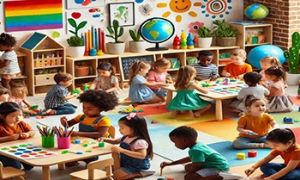STEM can be understood as an integrated learning approach that introduces Science, Technology, Engineering and Mathematics through play and everyday activities. The following article provides information on Understanding STEM, How To Teach STEM, Benefits Of STEM, Stem Activities and more.
With the explosion of neurological research, scientists now know that the human brain is constructed through an ongoing process that begins even before birth. More importantly, early experiences literally shape how the brain gets built which is why exposure to a rich learning environment together with intentional, learning activities in the early years increases the probability of positive outcomes. So if you are an educator, here is a comprehensive STEM teaching guide to give your learners the best possible start in learning.
Understanding STEM
Contrary to traditional perceptions, STEM subjects are not abstruse knowledge systems to be taught in science or math “time”. Instead, they are found all around us and playing out in our day-to-day interactions with our environment. Indeed when young children compare and contrast natural materials like rocks and soil, roll balls across the room or build structures with blocks, they are already participating in STEM activities. So, here is a bit more on the different STEM subjects and how it usually looks in your centre:
Science
Science is essentially a way of thinking. When children observe and experiment, make predictions, share discoveries, ask questions and wonder how things work – each time, they are engaging with Science. And since it is such a broad term, it helps to know the various subjects you might encounter when teaching Science, like:
- The Earth and Space Sciences describe the properties of the earth, ocean, atmosphere, and universe (what things are called; what they do; how they look, act, and react to various stimuli). It includes geology and astronomy.
- The Physical Sciences investigate natural forces and the basic elements in natural substances.
- The Life Sciences include the study of living things (what they are, how they survive, their life cycles, and how they change). The three major components of the life sciences are biology, physiology, and ecology.
Technology
At its simplest, technology is a way of doing – it is using tools, being inventive, identifying problems, and making things work. include the systems that provide our houses with water and heat; roads, bridges, tunnels, and the cars that we drive; aeroplanes and spacecraft; cellular telephones; televisions and computers; many of today’s children’s toys, and systems that create special effects in movies
Engineering
If Science tries to understand the natural world, the goal of engineering is to solve practical problems through the development of technologies. Preschool children can begin to develop concepts in engineering as they design, build, and test solutions through their play—as they construct sandcastles and build cities out of blocks.
Math
Fundamentally, math is a way of measuring which can include sequencing (1, 2, 3, 4…), patterning (1, 2, 1, 2, 1, 2…) as well as exploring shapes (triangle, square, circle), volume (holds more or less), and size (bigger, less than).
How To Teach STEM
Here are some general guidelines for teaching STEM.
Set up the environment
STEM learning happens best in learning environments intentionally designed to provide brain-building experiences for children. To make this happen, see that your environment is equipped with a variety of materials that kids can use to measure, count, sort, blow, fly, mix, make larger, make sounds and so on. Besides blocks and sorter shapes, stock up on crayons, paints, bowls, spoons, dough, fun mirrors, flowers and leaves that allow children to explore textures, properties as well as causal relationships. Sensory learning is a hugely effective way to teach concepts ranging from colour and music to pressure and gravity. Also, keep scientifically accurate books about animals and their environments in different narratives such as field guides as fictional stories so that children pick up the basics of research on their own.
Benefits Of STEM
How effectively children benefit from STEM environments and experiences will depend to a great extent on certain dispositions and skills like:
- Observing - It is crucial to note an object or phenomenon in all its details and record them to be able to understand how it relates to STEM subjects. To practice observation skills, an educator can have each child select one item on a nature walk—like a leaf, rock, or another small object— and draw the item when back indoors. As they draw, help them notice details like the shape, texture, colours, and weight of the object. Even better, encourage children to keep a journal throughout the year to save these observations so that the natural world and its properties can be extended to other scientific concepts like a change of seasons, movement of the earth around the sun and so on.
- Curiosity - young children with their natural curiosity about the world are born with this basic scientific disposition that needs to be encouraged and extended. One of the ways educators can do this is by noticing what they are doing during play with water, shadow, or sand; and asking open-ended questions like, “Tell me what you are working on now” or “What do you notice about how it’s moving?”. In fact, experts point out that asking “what” questions is better than “why” questions since the latter implies there is a correct answer and the child is being tested. In fact, a question like “Why is the magnet sticking to that kind of metal?” may be difficult even for an educator to answer accurately and completely. “What” questions, on the other hand, make space to start a conversation where both educators and children can explore all that is happening before them. Thus focusing questions on what kids have observed and noticed, like “What did you try?” or “What have you changed about what you are making?” not only allows educators to help children develop valuable communication and observation skills, but also build problem-solving skills by giving them questions they can mull over to come up with solutions.
Use the language of science
Part of teaching STEM to children is getting them to use the language to understand and explore STEM-related phenomena. You can do this by adding science vocabulary words to a classroom word wall or modelling words to describe actions like, "I'll pour this water into the cup of cornstarch as you stir. Is the mixture now more like a solid or a liquid?” However STEM language need not always be complex and for very young children, you can replace jargon with simpler phrases; when conducting an experiment, instead of telling kids to “make observations”, ask “What does it look like”? Though some terms may be unavoidable, wherever possible, use simpler questions to clarify different concepts, like “what do you think will happen” and “did your guess turn out to be correct” to teach the difference between a hypothesis and a conclusion.
Integrate with other learning
As discussed before, STEM subjects need not be limited to certain hours in a day. Instead, they can be embedded in almost all daily indoor and outdoor activities So as setting out on a nature walk, calling attention to leaf patterns and arrangements of petals on flowers to introduce design and numeracy. Children can also make connections between mathematics and musical experiences or art when they explore rhythmic or visual patterns or symmetry.
Focus on the concrete
Young children need concrete experiences that enable them to observe, categorize, compare, and contrast. So it is less useful to talk in abstract terms like mass and density than to engage them in activities to explore how cork floats on but sand sinks in water.
Encourage Experiments
Such direct engagement with the concrete can happen only when opportunities for experimentation are built into the learning environment. And these need not be very complicated too, for example, something as fun as using droppers to squirt coloured oils into a beaker of water can teach kids about oil and water not mixing while just a paper towel, markers and two glasses of water are enough to demonstrate capillary action.
Educator’s role
When engaging children in STEM activities, keep in mind that the educator’s role is mainly that of a guide or facilitator. Instead of telling children what to do or showing them the ‘right’ way to go about it, try to remain on the sidelines offering support when children need help with developing new skills and extending new ideas. The other way you can support children’s STEM engagements is by facilitating interplay between them and the learning environment.
STEM Activities
Apart from general STEM teaching guidelines, here are examples of activities that would support you in planning specific learning experiences in specific STEM subjects.
Science
- Earth and Space Science – When teaching kids about sunlight and shadows or describing the effects of the sun or sunlight, take them on a walk. Tell the children to observe shadows of trees and other stationary objects in the morning or even outline them with sidewalk chalk. Then return in the afternoon to see if the shadows have moved or are different in some way.
- Life Sciences – Introduce the concept of living and non-living beings by cutting out pictures of both sorts from magazines or catalogues. Have children sort them into living vs. nonliving on a large board or sheets of paper on the wall. After sorting, discuss their choices and what all living things have in common. Once children agree on basic must-haves for living creatures, refer to them again the next time you go for a walk.
- When teaching children about seasonal changes in plants, animals and their personal lives, plan an outdoor activity. Choose an area in your playground or neighbourhood park and make a point of observing it during the different seasons of the year. Invite children to draw a tree, bush, sidewalk, or playing field on the first of the month, for example, and talk about how the appearance changes during a cycle of seasons.
- Physical Science – When teaching children pressure and gravity, experiment with a variety of objects to determine when the objects can stand and ways that objects can be balanced. You can do this by offering a wide variety of building materials for kids to build with, including small and large boxes or safe empty cartons. Put forth design challenges to children by asking them to “make a bridge for the animals to get from the chair to the desk,” or “Who can build a tower taller than their own body?”
- When teaching children about motion, have children move their bodies to imitate moving objects from favourite books; for example, float from the sky like a snowflake, pop out of an egg-like a hungry caterpillar or roll on a beach like a coconut.
- Introduce children to different elements and their properties by asking them to blow air on their hands and to wave their hands in the air. Ask them, “What do you feel?” and “Can you hold air?” You can even extend the concepts to force and motion by lining up floating toys in water and then having a child use a straw to blow a toy across the water. Let children repeat the activity and then kickstart discussions by asking, “What happened when you blew on the toy?” Encourage kids to use descriptive words like ‘faster’ and ‘slower’.
- Yet another interesting activity is bubble blowing with different shaped objects. In a tub, make a bubble solution with dish soap. Dip objects like cookie cutters, a loop of string, and straw into the soap solution and then show children how to blow through it to make a bubble. Have students note the shape of the bubble maker before they use it. Ask, “What shape do you think the bubble will be?” also experiment with blowing fast and slow. No matter what shape the object, the bubble will always be round due to liquid surface tension.
Technology
- Introduce children to tools and materials to get them used to different types of basic technology. Using scoops for the beach, have your children practice moving dry material like sand or dirt from one container to fill another. Similarly, have them practice pouring by using a small plastic pitcher and a few plastic cups. Tell them that the cups are empty and that they should pour the liquid into the cups until they are full.
- Using a simple magnifier, have children look at something up close. Encourage them to note what they are able to see with and then without the magnifier?
- Another way to use technology is with scissor cutting games. Show children how to hold scissors and which finger goes where. Ask them to cut out different shapes, starting simple like cutting along a straight line and working up to more complex shapes. However, keep in mind that scissor technology requires advanced fine motor skills and high hand-eye coordination which very young children may need many months to master.
Engineering
- Make opportunities for children to practice engineering through play with blocks, cardboard boxes, plastic bottles, nesting cups and even leftover containers. Better still mix up building materials like building blocks with legos or foam bricks with cans so that they can explore how gravity, balance and shapes are mediated by different materials. As children learn to figure out the activity, scale up the level of challenges by asking them to: Build it as tall as you are - Build a tunnel you can crawl through - Build something as a team. - Build something in five minutes.
- Slowly take apart a tower until it tumbles down.
- As children are engaged in these building activities, ask leading questions like, “What do you think will happen?” “Will the structure stay by itself? Is it balanced?” Also encourage collaborative skills like showing children how to learn from one another, “Here, you try” and cooperative behaviour by suggesting “Can you take turns building with the blocks?”.
Maths
- When teaching classification, ordering, measurements and quantities, have children explore and describe a wide variety of concrete objects by their attributes. Encourage them to sort ordinary objects like toys, rocks, leaves, seashells, shoes, or snack, according to different features, such as size, texture, colour, pattern, and weight. Level up the activity by having children find matching objects like, cars with cars, blocks with blocks. Repeat using different criteria like matching colours, sizes and shapes. Through the activities, introduce descriptive words like big, round, rough, small, shallow, flat, crooked, and heavy.
- Yet another activity to introduce numbers and measurements would be having children use their bodies as a unit of measurement. For example, encourage the group to find out how many Janes does it take to cross the room? How many hands high is that tower? Is one hand the same size as another?
- The Da Vinci dimension activity is one of the best examples of how STEM can be incorporated with other subjects like arts. The height, head to toe, of Da Vinci’s Vitruvian man equals the width of his arms, measured from the fingertips of one hand to the other. On the floor with a piece of tape, mark each child’s height, and have students rotate their bodies to compare their height and arm span.
- Through all such activities, encourage parents to continue STEM exploration at home. For example, when doing sorting and counting in class, encourage the parents to have their child assemble a collection of toys based on a particular criterion, like “Find all of your toys that are red” or “Find all of your toys that fit in this box.”
Here are a few examples of learning experiences that introduce Science, Technology, Engineering and Mathematics through fun and engaging activities: Example Of Stem Examples
Incorporate STEM over the day
While the best STEM learning happens when they are incorporated into all aspects of the curriculum, doing them all together in the same day, would be exhausting and confusing for children. One way of going about designing STEM experiences would be to focus on a particular area or concept over the course of a day. Here are some ways, you can explore fruits and their properties, through various activities in your setting.
- Free play time: If your service begins the day with free play time, introduce the topic of fruits and vegetables to children by having them explore various resources on their own. For example, the reading corner could have some books about fruits and vegetables. Add a sorting game with plastic fruits. In the dramatic play corner, create a market featuring fruits and vegetable stalls.
- Circle time: Once children have found their own way of getting a ‘feel’ of the topic, set in motion relaxed group activities like a field trip for apple picking. An interesting indoor option would be to bring in a bag of apples to share in the circle and let the kids feel and smell an apple from the bag. Read a book like Applesauce by Shirley Kurtz or sing songs
- Outdoor playtime: Take children on a walk through the playground or around the block and find trees that have fruit or flowers growing on them. Have kids collect what is growing on the trees and discuss their colour, shapes or textures.
- Cooking activity: Plan ahead to have a few volunteers come in and make applesauce with the children. It can start as a whole group activity as all children pitch in with peeling and putting apple slices in a pan to be cooked. Eventually, only those children who want to help with more of the cooking can work with the volunteers to finish the applesauce. For kids who are not cooking, an educator can sing some songs, play some music or read a book about Johnny Appleseed.
- Transition to home: Write a note for families about applesauce making. Tell parents to ask their children, “How did the apple turn into applesauce?” and encourage them to try some applesauce with their dinner.
For educators looking for ways to get their learners talking about STEM, here are a few more ways to get started: Introducing STEM To Children In Early Childhood Settings
With increasing evidence of the benefits of early STEM introduction, there is now a growing corpus of resources for educators. Armed with a bit of planning, research and a hearty imagination, STEM teaching can turn out to be fun and transformative for both you and your learners.
References:
STEM Guide, Boston Children's Museum
Building Language and Scientific Literacy In Young Children, Reading Rockets
Support Science Learning, NAEYC


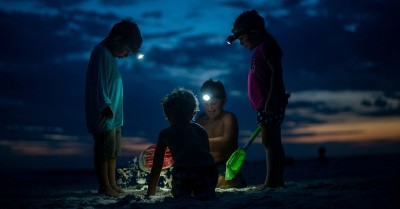

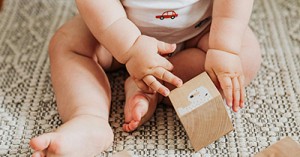
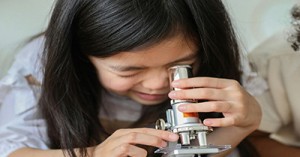

 Open ended questions cannot be responded to with one word answers such as yes or no. These types of questions enables a child to provide
Open ended questions cannot be responded to with one word answers such as yes or no. These types of questions enables a child to provide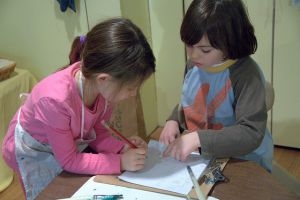 During your child’s preschool years, an important milestone begins to emerge. This is the development of pre-writing skills. Pre-writing skills are used to encourage, develop
During your child’s preschool years, an important milestone begins to emerge. This is the development of pre-writing skills. Pre-writing skills are used to encourage, develop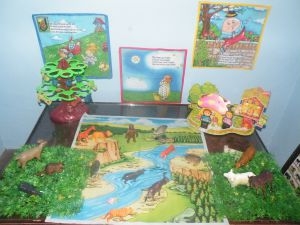 Open ended materials enables children to play freely. They are objects that have no rules to follow, use or function. Raw materials that can be
Open ended materials enables children to play freely. They are objects that have no rules to follow, use or function. Raw materials that can be An Acknowledgment of the Country is a way of showing respect for the Traditional Owners and can be given by both non-Indigenous people and Aboriginal
An Acknowledgment of the Country is a way of showing respect for the Traditional Owners and can be given by both non-Indigenous people and Aboriginal Language plays an important role in a child’s development. It enables a child to communicate effectively with their family, learn at school, socialize with friends,
Language plays an important role in a child’s development. It enables a child to communicate effectively with their family, learn at school, socialize with friends,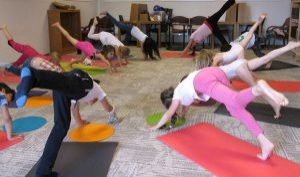 Like adults, children have to deal with their own stress in life. Moving house, starting a new school, preparing for a new sibling - these are
Like adults, children have to deal with their own stress in life. Moving house, starting a new school, preparing for a new sibling - these are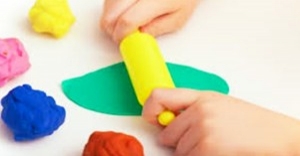 Playdough is such a versatile material. It provides numerous benefits to children as they manipulate it, it is safe and soothing and provides children with
Playdough is such a versatile material. It provides numerous benefits to children as they manipulate it, it is safe and soothing and provides children with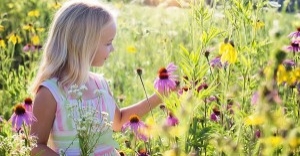 Teaching children about sustainability enables them to appreciate and respect the natural environment. Early childhood services can provide meaningful hand on learning experiences in order
Teaching children about sustainability enables them to appreciate and respect the natural environment. Early childhood services can provide meaningful hand on learning experiences in order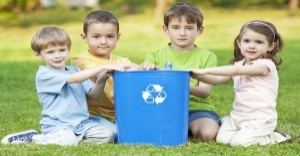 Recycling is an important concept that teaches children to care for the environment. It encourages children to be responsible and show a growing appreciating for
Recycling is an important concept that teaches children to care for the environment. It encourages children to be responsible and show a growing appreciating for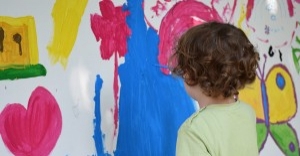 When children apply paint to paper, glue things together, or pound a lump of clay, they experiment with colour, shape design and texture.
When children apply paint to paper, glue things together, or pound a lump of clay, they experiment with colour, shape design and texture.


